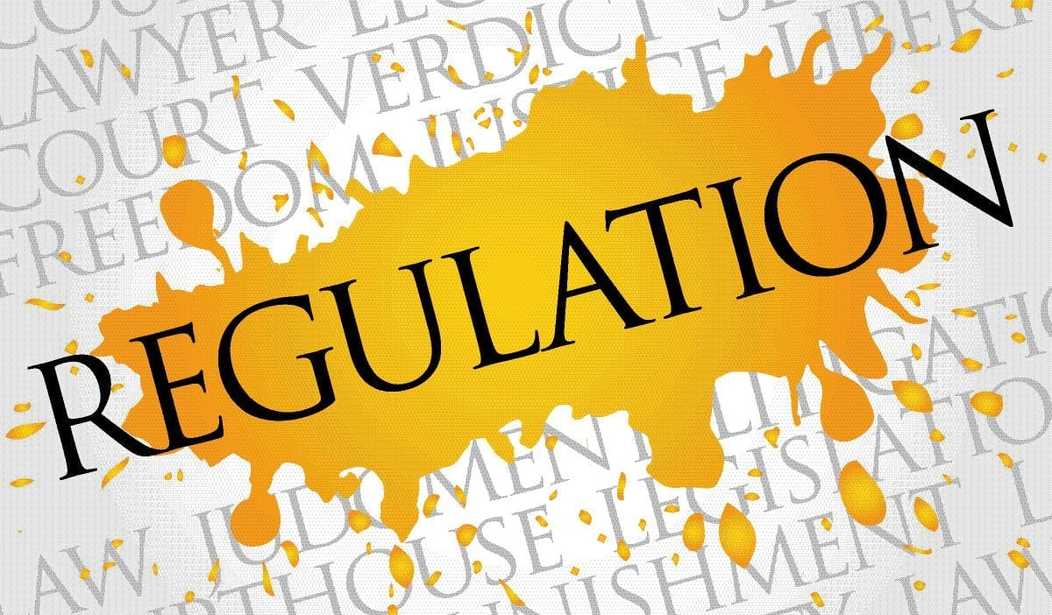The cost of regulating business has gotten out of control, with a $4 trillion burden imposed on American companies.
The study by the Mercatus Center at George Mason University shows that if regulations had been held at a constant level since 1980, the economy would be 25% larger.
“The impact of regulation on economic growth has been widely studied, but most research has focused on a narrow set of regulations, industries, or both,” according to the report. “These studies typically rely on regulatory indexes that measure subsets of all regulation, on country-to-country comparisons, on short time spans, or on surveys in which experts report how regulated they believe their country or industry is.
“In order to better understand the cumulative cost of regulation, a comprehensive look at all regulations across many industries over a long period of time is imperative.”
Researchers at Mercatus studied data from 22 industries from 1977 to 2012, finding regulations have distorted “investments choices that lead to innovation” and have “created a considerable drag on the economy.” The result: an average shrinking of the economy by 0.8 percent a year.
“If regulations had been held constant at levels observed in 1980, the American economy would have been 25 percent larger than it was in 2012,” the report said. “This amounts to a $4 trillion loss in 2012 for the American economy or $13,000 loss per person, a significant amount of money for most American workers.”
The cost of federal regulations amounts to the fourth-largest GDP in the world, surpassing the economies of Germany, France, the United Kingdom, Brazil, Italy, Russia, and India.
Mercatus researchers Bentley Coffey, Patrick A. McLaughlin, and Pietro Peretto said they hope that their in-depth analysis will persuade lawmakers and federal agencies to think twice before implementing costly regulations.
“While static analysis of individual regulations sometimes predicts beneficial effects for society, policymakers should consider the results of this study not only when creating new regulations, but also when considering reform of the regulatory process itself,” the study said.
“By altering investment decisions and disrupting the innovation that comes from investment in knowledge creation, regulations have a cumulative and detrimental effect on economic growth—and, over time, have a real impact on American families and workers.”
American business is not over-regulated. It is crushed by regulations. Thousands upon thousands of rules tell businesses whom they can hire or fire and how they must operate. Regulations supply instructions in minute detail of how to dispose of waste. Obama apologists keep telling us that Obama has actually imposed fewer regulations than George Bush. But this is dishonest because the reporting requirement to Congress only involves regulations that cost industry more than $100 million. There are thousands of regulations that cost far less but that, cumulatively, are burying companies in a sea of red tape.
Few are making the argument that we don’t need regulation. There are beneficial rules for worker safety, air and water quality, and a host of other issues that not only protect people, but supply guidance for industry.
But the bureaucrats can’t leave well enough alone. The must constantly extend and add on to regulations to justify their existence. Hence, the nightmare that the Clean Water Act has become. The overzealousness of regulators in enforcing wetlands rules. And the constant, unrelenting demand for surveys, compliance reports, and other paperwork telling government that your company is obeying hundreds of rules created by people who know little about business and nothing about your company’s problems.
The Competitive Enterprise Institute has tracked the growth of the Code of Federal Regulations (CFR) since 1960:
The page count for final general and permanent rules in the 50-title CFR seems less dramatic than that of the oft-cited Federal Register, which now tops 70,000 pages each year (it stood at 79,311 pages at year-end 2013, the fourth-highest level ever). The Federal Register contains lots of material besides final rules.
Still, the CFR “Archive-Of-All” is big. Very big. Back in 1960, the CFR contained 22,877 pages in 68 volumes.
The pace picked up. The CFR stood at 71,224 pages by year-end 1975, in 133 volumes.
Now, new data from the National Archives shows that the CFR stands at 175,496 at year-end 2013, including the 1,170-page index.
Understand that each and every regulation carries the force of law. And ignorance of the rule is no excuse.
It’s an impossible situation. Occasionally, Congress bestirs itself and strikes down an onerous rule. But there are just too many of them. President Obama set a record in 2015 for the number of pages in the Federal Register. There is more in the FR than proposed and final rules, but at 81,000 plus pages for 2015, it’s a good indication of things to come.










Join the conversation as a VIP Member